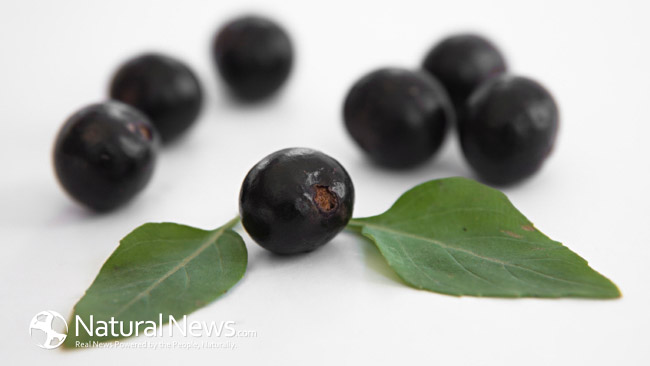Acai berries have become popular with the spread of acai bowls and smoothies available. This dark purple berry comes from Brazil and is considered a “superfruit”. Technically, they’re not a berry because they have a pit like an apricot, so they are from the drupe family. Most times, acai berries are mashed into a purple looking paste and consumed this way. They have a very short shelf life, so we typically can buy them frozen, in pressured juice form, or as a powder.
The nutritional makeup of acai berries is unique compared to other fruits. In 100 grams, there are 70 calories, 4 carbohydrates, 2 grams of sugar, 2 grams of fiber. However, acai berries are a little bit higher in fat compared to other fruits, having 5 grams of fat in 100 grams. They are a good source of antioxidants because they contain anthocyanins. Their deep purple color comes from this, and anthocyanins can be found in other black and purple foods like black beans and blueberries. Anthocyanins have also been found to improve good cholesterol (HDL). Antioxidants are important to repair cellular damage caused by free radicals. Acai berries knock out the park with antioxidants. To measure antioxidant amount in foods, the Oxygen Radical Absorbance Capacity (ORAC) score is used. Acai berries have a very high score of 15,405 compared to other fruits such as blueberries which have a score of 4,669. That’s almost three times higher.
The brain also benefits from eating acai berries because of their high antioxidant levels. Since antioxidants help fight the inflammation and oxidation of brain cells, memory and learning can be positively impacted. Acai helps with the “housekeeping” of the brain called autophagy. This is the process of cleaning out cells that are toxic and not working. As a result, new healthy cells can form.
Besides being a bit higher in fat, the effects of acai sound very promising. However, it’s important to read labels and watch for added sugars when eating acai. The bowls and smoothies can be loaded with other high sugar and carbohydrate containing foods, leaving a false perception of eating “healthy”. We can mislead but the terms “all-natural” and “organic” because they don’t equate to sugar free, fat free, and calorie free. Acai can be one of those healthy foods that are good for you, but not a daily fruit to consume in high amounts.
Açaí (Euterpe oleracea Mart.) in Health and Disease: A Critical Review – PMC (nih.gov)



